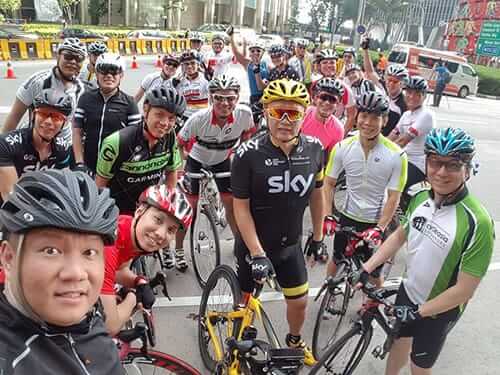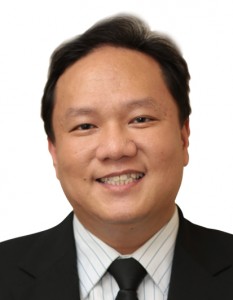Specialist Dental Group has launched an on-going series of blog posts by our individual dental specialists. All views provided are the dentist’s own opinions and are posted on this blog as part of our on-going efforts to educate the public about dental issues and other matters of interest.
Cycling and dentistry are two activities that I enjoy doing currently. As some of you would have already known, I have been practicing as an oral surgeon for more than ten years, so today I shall share more about how I began cycling.
I started cycling when I was 10 years old after a neighbour passed me an old bicycle. My self-taught bicycle skills allowed me to cycle every Sunday morning to a house church near my home in the Upper Serangoon area. Years later, we moved and the bicycle was discarded as it was deemed too old. My cycling hobby came to an abrupt end.
Fast forward 34 years later, I have rented numerous bikes at East Coast Park as well as lost a rather pricey mountain bike when I parked it at a condominium’s basement carpark. I am now onto my third bicycle – a road bike which I use to cycle regularly with a diverse group of friends.

So how is cycling related to dental health and dentistry? I never knew until an incident that happened to a patient of mine who is also an avid cyclist. He would regularly do round island cycling (which literally means cycling around the island of Singapore, covering almost 160km or more) regularly on Sundays with his cycling kakis.
As his dentist, I had the opportunity to help him with various dental procedures. His upper front bridge was failing, so we dismantled it and replaced it with a couple of dental implants. Bone graft materials were applied and the old bridge was temporarily substituted with a fabricated dental bridge. The temporary dental bridge is made of high-impact strength resin material. It also looks like and functions like teeth. However, under intense force and pressure, it may still break. The strength and rigidity is inferior compared to the definitive or permanent dental bridge which is made out of a zirconium framework and high strength ceramic material.
I received a phone call from him on a late Sunday morning. This was a few weeks after completing the first stage of dental treatment for him. He sounded frantic and exclaimed that his temporary bridge flew off while cycling! I was still quite new to road biking then and wondered how that could have happened. After he explained to me, I could understand and imagine how the temporary bridge could have broke, dislodged and “flew” out of his mouth.
He explained that cyclists usually have the habit of carrying energy bars and gel packs when they ride for long distances. These packs are neatly packed behind their jerseys and in the back pockets so that they can be conveniently retrieved and consumed on the go. My patient took out a gel pack and like he had done so many times before, he used his front teeth to tear open the gel pack. But this time round, his upper front temporary bridge cracked under the heavy biting and shearing action. I went on to see him that very Sunday evening and got the temporary bridge fixed back.
Ultimately, all went well but it reminded me on an important lesson: Maintaining good oral health is not only important for our daily activities, but it also enhances our sporting experiences. Therefore, keep your teeth healthy by following the rule of 2-2-2: brush 2 times a day, for 2 minutes each and visit your dentist 2 times a year.
On a side note, a recent research has shown that besides making you fitter, cycling also sharpens your thinking and melts stress away. So keep your teeth healthy and keep riding!
 Dr Ho Kok Sen is an Oral & Maxillofacial Surgeon with Specialist Dental Group. Dr Ho is a mentor, lecturer and examiner to students in the Graduate Diploma in Dental Implantology course at the National University of Singapore. Dr Ho is a fellow of the Royal Australasian College of Dental Surgeons and the Academy of Medicine Singapore. He has a special interest in dental implants, jaw surgery, bone grafting and complex extractions.
Dr Ho Kok Sen is an Oral & Maxillofacial Surgeon with Specialist Dental Group. Dr Ho is a mentor, lecturer and examiner to students in the Graduate Diploma in Dental Implantology course at the National University of Singapore. Dr Ho is a fellow of the Royal Australasian College of Dental Surgeons and the Academy of Medicine Singapore. He has a special interest in dental implants, jaw surgery, bone grafting and complex extractions.





